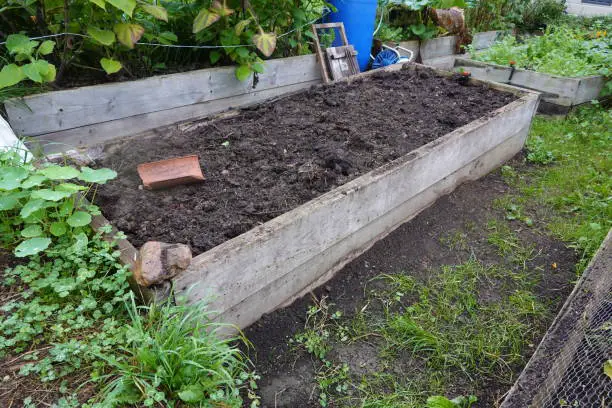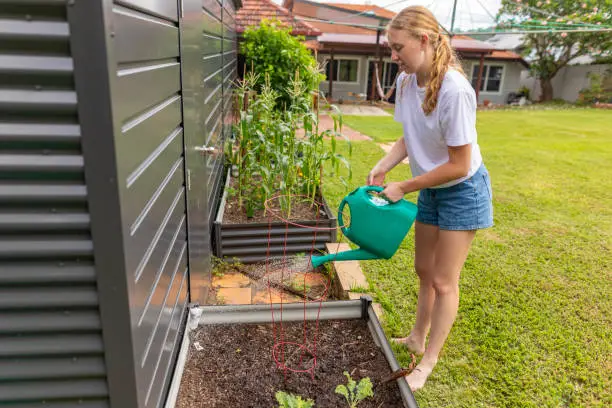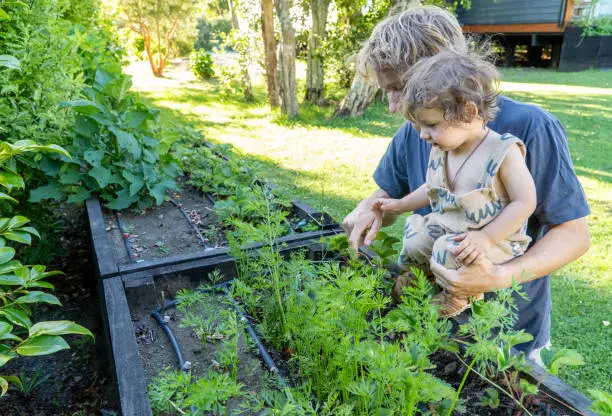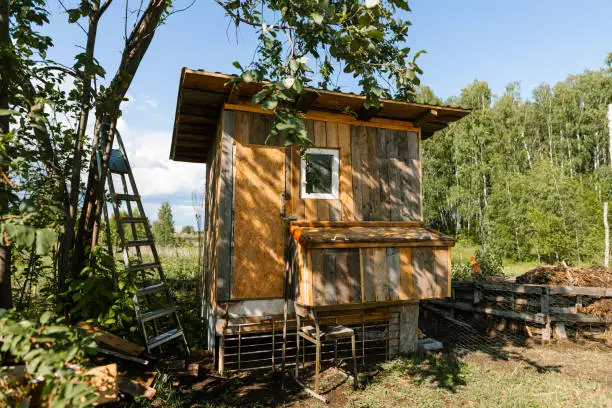Imagine a bustling backyard homesteading that produces every month. Dreamy, right? It’s more possible than you believe. Let’s explore ways to make your outdoor space self-sufficient year-round.
Winter Wonderland
Winter is sometimes accused of being the gardening off-season. But wait! Plenty to do.
Planning & Preparation: Make a cup of cocoa and plan your garden for the year. Explore crop rotation, companion planting, and new arrivals.
Cold Frames and Greenhouses: Cold frames or greenhouses help keep plants developing when Jack Frost bites. These clever structures retain solar heat, bringing fresh greens even in winter.
Composting: Composting is best in winter. Eggshells, veggie peels, and coffee grounds should be collected. Layer them with leaves or straw in your compost bin for spring black gold.
Spring Arises
Spring revitalizes your farm. All systems go!
Start Seeds: Plant seed trays on sunny windowsills or under grow lights indoors. Good choices are tomatoes, peppers, and herbs.
Transplanting: Bring seedlings outside after the final frost date (check local recommendations). Be gentle—they’re like newborns learning to walk.
Preparing the soil: Add compost or well-rotted manure. From the ground up, a cheerful garden!

Summer Splendor
Everything grows faster in summer—including weeds!
Smart Watering: Early irrigation prevents evaporation and fungal infections. If you hate carrying hoses, consider drip irrigation.
Weeding: Yes, annoying but necessary. Mulching retains soil moisture and reduces weeds.
Time to harvest: It’s what you wanted! Pick veggies regularly to boost production. Nothing screams friendship like homegrown tomatoes, so share any surplus with neighbors!
Autumn Harvest
Autumn brings pumpkin spice lattes and harvest season!
Preserving Bounty: Can, freeze, or dehydrate extra vegetables to save waste in winter when new pickings are scarce.
Cover Crops: After harvesting major crops, plant cover crops like clover or rye to replenish soil nutrients over winter before next year’s planting season.

Year-Round Tips
Natural Pest Control: Instead of pesticides, use ladybugs to eat aphids.
Rainwater Harvesting Systems: Put barrels beneath downspouts for free water from Mother Nature!
Grow vertically using trellises or hanging plants to maximize space.
If zoning allows, chickens provide eggs and natural pest management, while rabbits produce high-quality fertilizer from their droppings.
DIY projects abound: You can make birdhouses from reclaimed wood scraps or raised beds from pallets—the options are unlimited!
So there it is—a thorough book full of practical ideas for growing your backyard farm year-round without breaking the bank or losing your sanity!
Learning to Budget for Backyard Homesteading Projects
Want to make your garden a self-sustaining oasis? Like having your cake and eating it. Budgeting can make or break your homesteading goals, so let’s talk about it before you start.
First, list your goals. Do you want a chicken coop, vegetable garden, or tiny greenhouse? Each project has unique expenses and requirements. Writing down these ideas helps you visualize the future.
Research is your best buddy next. Try local nurseries, internet forums, and YouTube instructions. These resources illuminate cost-effective methods and potential dangers. Knowledge is power, especially when saving money.
Let’s talk materials. Budget-conscious homesteaders can profit from recycled materials. Old pallets can become raised flower beds or compost bins with some elbow grease. Craigslist and Facebook Marketplace offer free or cheap materials.
Let’s talk tools. Instead of buying new electronics, borrow or rent them from neighbors to save money. Tool libraries in many areas offer free or low-cost equipment.
Labor is another paramount price. DIY projects are cost-effective if you’re handy with tools. Don’t be afraid to ask for help—friends and relatives may be eager to help with homegrown veggies.
Water management is vital yet sometimes needs to be considered in planning. Rain barrels are a cost-effective technique for watering plants. Affordable and easy to install, they give Mother Nature a high five!
Bulk seed and plant purchases save money. Seed swaps are great because they also introduce you to other gardeners who can offer suggestions.
If you plan to have livestock, make sure to include them. Chickens are famous because they’re low-maintenance and produce eggs. Building your coop with recycled materials is far cheaper than buying one.
Your budget should include maintenance from the start. Regular maintenance prevents minor concerns from becoming costly major ones.
Energy efficiency can control costs over time. Solar panels may seem expensive, but they pay off in lower electricity bills year after year.
Speaking of investments—composting! Creating nutrient-rich garden soil from culinary leftovers is like turning trash into treasure. Waste reduction and fertilizer savings are a win-win!
Remember unexpected costs? They happen more than we’d like! Setting up an emergency fund for homesteading projects will help you weather financial storms.
Also, pay attention to community resources! Local agricultural extensions give free advice on sustainable methods for your climate that could save you money in the future.
Last but not least, track every penny spent vs. expected returns, whether monetary (like selling extra produce) or intangible (like personal satisfaction). This will improve future budgets, making projects financially easier!
Backyard Homesteading: Year-Round Self-Sufficiency
Imagine a flourishing backyard farm producing monthly. Pretty, huh? More is possible than you believe. Learn how to make your outdoor space self-sufficient year-round.
Gardening in winter is often seen negatively. Be patient! Plenty to do.
Make cocoa and plan your garden for the year. Examine crop rotation, companion planting, and newcomers.
Cold frames and greenhouses absorb solar heat, keeping plants alive when Jack Frost strikes. Winter fresh greens? Yes, please.
Winter composting is best. Gather eggshells, vegetable peels, and coffee grounds. Stack them with leaves or straw in your compost bin for spring black gold.
Spring revives your agriculture. All systems go!
Plant seed trays on sunny windowsills or under grow lights. Try tomatoes, peppers, and herbs.
After the last frost (check local requirements), transplant seedlings outside. Be kind—they’re like babies learning to walk.
Soil preparation: Add compost or well-rotted manure. A happy garden from the ground up!
Everything grows quicker in summer—including weeds!
Smart Watering: Early irrigation limits evaporation and fungus. Consider drip irrigation if you loathe carrying hoses.
Weeding was necessary yet annoying. Mulching keeps soil wet and reduces weeds.
Harvest: Pick veggies often to increase production. Homegrown tomatoes are the epitome of friendliness, so share with neighbors!
Fall brings pumpkin spice lattes and harvest!
Can, freeze, or dehydrate extra vegetables to save waste in winter when new pickings are sparse.
After harvesting primary crops, plant clover or rye to restore soil nutrients throughout winter before next year’s planting season.
Ladybugs can consume aphids instead of pesticides.
Install barrels under downspouts to harvest rainwater.
Grow vertically with trellises or hanging plants.
If zoning allows, hens give eggs and natural pest control. Rabbit droppings make good fertilizer.





Leave a Reply
You must be logged in to post a comment.